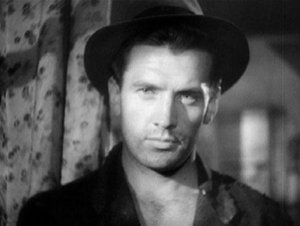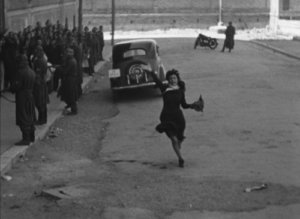An Introduction to Italian Neorealism – Essay
Italian Neorealism wasn’t considered a school by critics in Italy, but rather a trend in cinema that was brought about by the social and historical circumstances that were to be found in the country between the 1930s and 1940s. Although many thought Rossellini to be the father of this new trend in cinema, the start of Neorelism (at least in Italy) can be traced back to Italian film director Luchino Visconti and his film Ossessione (English: ‘Obsession’) in 1943. As for its duration, there are different theories: the first would consider Neorealism as a trend in Italian cinema that was limited to just four years (1945-1948); the second would extend its duration from ’45 until the early 60s.

Aside from periodisation, the project to reform Italian cinema was started by Visconti in the 1930s through his work in the journal “Cinema”. He would also work later in his career with many French directors such as Jean Renoir and Marcel Carnè, and he was influenced by the French realism in developing the techniques that became so typical of the new genre in Italy. Visconti and Rossellini are both considered the fathers of Neorealism, although they adopted two different styles in terms of cinematography: they can be said to represent opposite sides of the spectrum – from Rossellini’s immediate approach, to Visconti’s studied choices.
In general, content held more importance to Rossellini than form, while the opposite can be said for Visconti. For instance, in ‘Ossessione’, Visconti’s mise-en-scene aims to convey the drama of the two lovers from the start. The film tells of the adulterous relationship between Gino, a wandering tramp, and Giovanna, the wife of a restaurant owner. From the beginning of the film, Visconti conveys the drama of the married couple – Giovanna is neglected by her husband and spends her time in the kitchen – and the fascinating and exciting arrival of the stranger by showing Gino’s face as Giovanna sees him, through the use of a subjective shot:

Furthermore, Visconti sets the scene of the drama that will unfold, by giving the restaurant and its surroundings a bleak quality that mirrors Giovanna’s life and will lead her to adultery.
The Earth trembles (1948) and Bellissima (1951) are other works by Visconti worth mentioning. While the filmmaker used a more codified style – clearer we could say – with great attention to details and an organised plot before shooting, Rossellini on the other hand had an immediate, instinctive style, based much more on improvisation.
Rossellini had started his career within the fascist period and had already made three films that the Neorealist critic titled the ‘Fascist Trilogy’, featuring The White Ship (1941), A Pilot Returns (1942) and finally The Man with a Cross (1943). However, his political allegiance was in contrast with the anti-fascist purpose of the movement, and Rossellini’s double identity was, and remains, difficult to explain. Rossellini changed the focus of his films with Rome Open City set in 1945 – it was filmed in Rome and, amongst chaos and poverty, Rossellini shows us the resistance movement within the country. Perhaps the most important sequence of the film presents Anna Magnani’s character Pina shouting and running after the car driven by the occupation forces that took her husband away. The sequence ends with the woman being shot.

Rossellini almost always cast actors who had never acted before (like Anna Magnani), preferred to film in open spaces, and he often used ellipses in a complicated way in order to make the story less understandable. He didn’t use the climax, which was typical of Classical Hollywood and of its Decoupage, but instead he let us see the consequences and the emotions without showing us the reasons. This is a technique he uses especially in Paisà, which is part of the so called Neorealist Trilogy: Rome Open City (1945), Paisà (1946) and Germany year zero (1948).
For many, Rome Open City marked the start of Neorealism, but as I pointed out earlier in the piece both Luchino Visconti and Roberto Rosselini are to be credited with the foundation of what was at the time a new trend in cinema.
In general terms, Neorealism was characterised by the use of outside settings, non-professional actors, a predominance of documentary film that portrayed society and the reality of the time, as well as the preference for the representation of the poor and the lower classes instead of an upper or middle-class environment. It was also important that the viewer had the impression of reality; of the world as it was and to be part of it. In short, Neorealism aimed to give the viewer a direct experience of reality as it was: space was not symbolic, rumbles and poverty were not a metaphor for the characters’ inner lives, they were instead on the contrary, an unmediated representation of reality and social life. Somewhat contradictory is the work of Visconti who, as compared to Rossellini, somewhat departed from the trend by focusing more on mise-en-scene and a symbolic representation of space, as pointed out in reference to Ossessione. The belief in this regard is that it illustrates that Neorealism was not a school or a codified movement, but a trend across a wide spectrum that was popularised in different and unique ways by each director, while still keeping a common ground.
Amongst other important directors of the Neorealism movement there are: Pietro Germi, Giuseppe De Santis and Vittorio De Sica. It is important to note that De Sica also directed some of the most important Italian films with regards to international appeal, such us : Bicycle Thieves (1948), Miracle in Milan (1951) and Umberto D (1952). Pietro Germi is another prominent figure of Italian cinema, as he directed well-known films such as: The Railroad Man (1956) and Path of Hope (1950), both masterpieces of Italian film history, each also having historical importance and an international reputation.
Recommended for you: Our “Where to Start with…” Series
Bibliography and further reading
Bazin, André. “Le réalisme cinématographique et l’école italienne de la libération.” Esprit, XVI, n.1 Janvier 1948.
Farassino, Alberto. “Neorealismo, storia e geografia”. Neorealismo. Cinema italiano 1945-1949, edited by Farassino Alberto, EDT, 1989.
Miccichè, Lino. Visconti e il neorealismo. Marsilio, 1990.
Parigi, Stefania. Neorealismo. Il nuovo cinema del dopoguerra. Marsilio, 2014.

